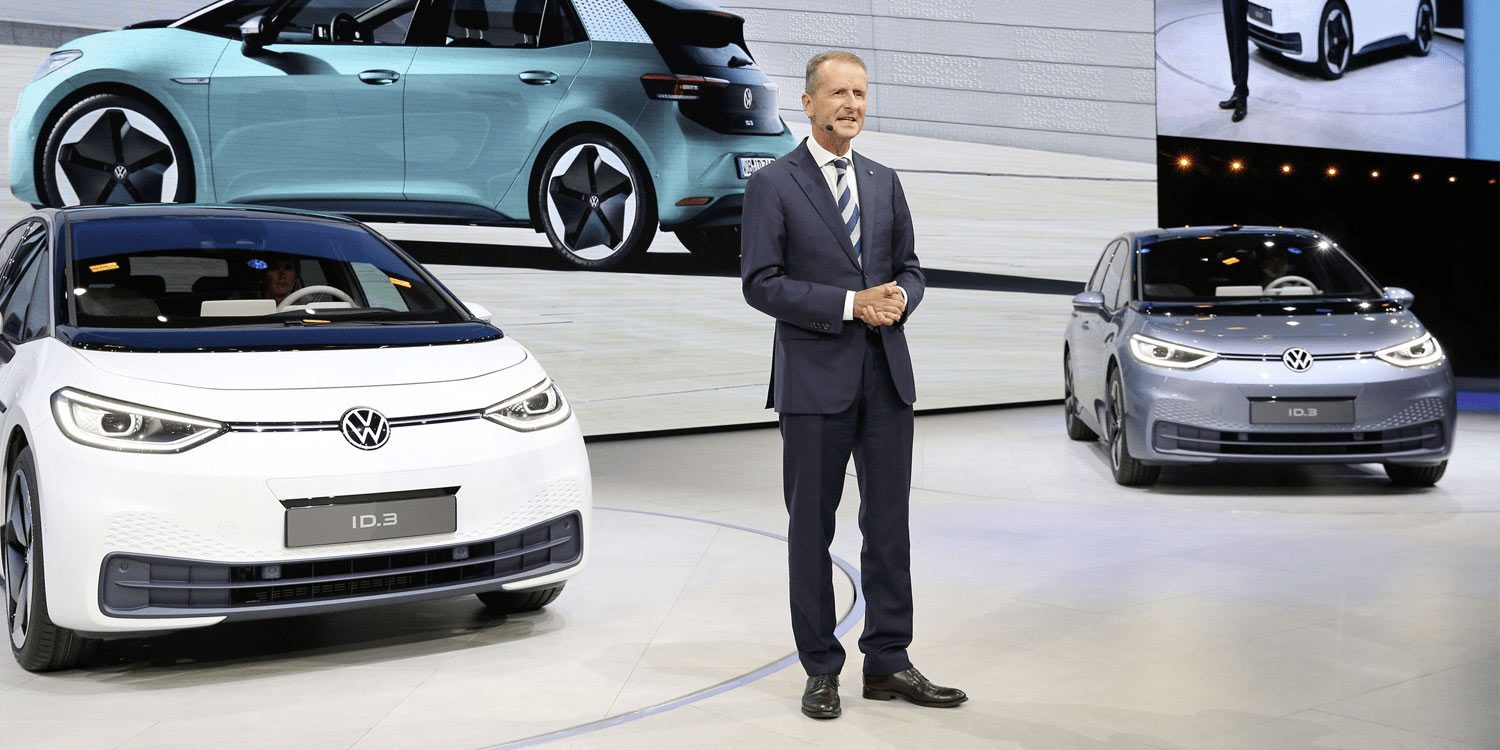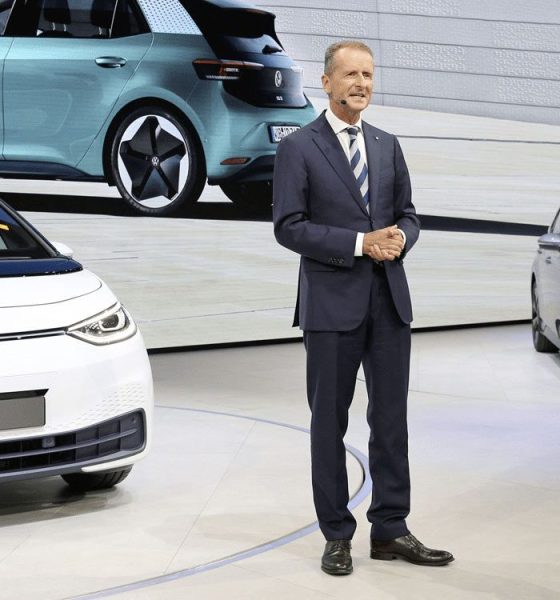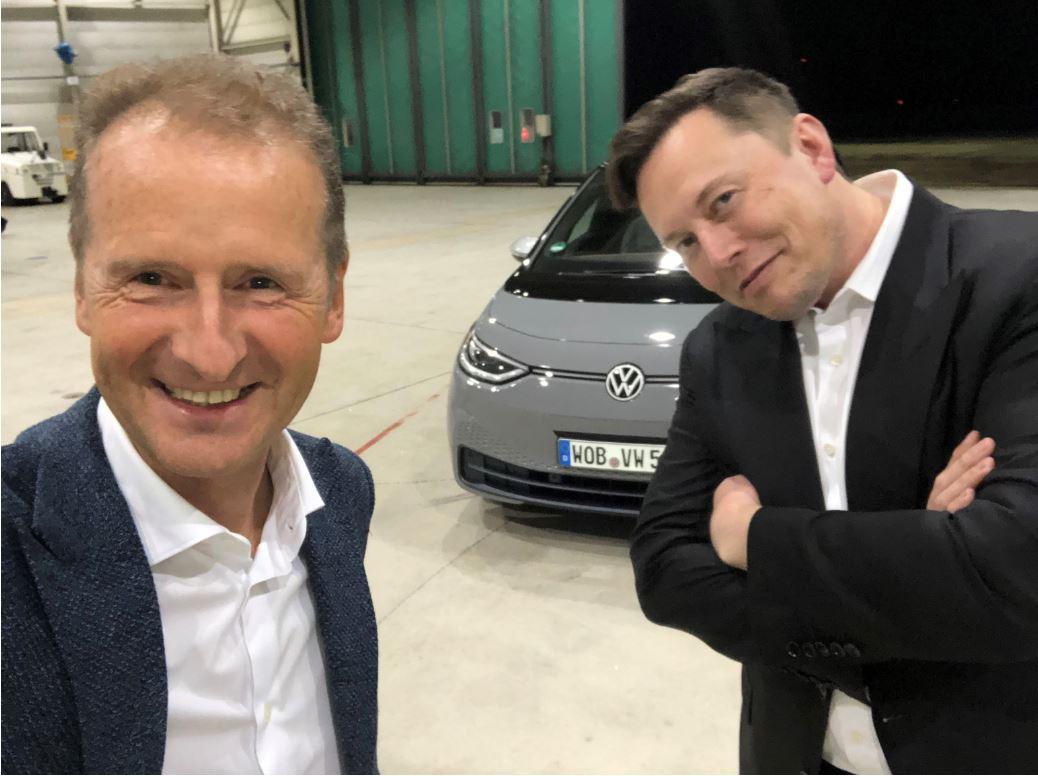

News
Volkswagen’s Diess wants 40 battery factories in Europe to handle EV overload
Volkswagen knows the future of the automobile industry is electric, and it is doing its best to transition its massive German stronghold into a series of large-scale electric vehicle production facilities. A company that is less than ten years out of a major scandal involving emissions cheat devices, VW is equipped with a new head since the Dieselgate scandal initially broke twelve years ago. Herbert Diess is likely the best man for the job: he’s charismatic, he’s driven, and he knows a thing or two about the auto industry. But most importantly, the man who runs Volkswagen knows that to keep up with the surge in electric vehicle popularity, his company will need more of everything, especially batteries, which he is preparing to produce in massive numbers if the European Union’s Green Deal is approved.
Ten years ago, Diess asked the head of China’s CATL, a battery supplier, if the company would ever transition away from smartphone batteries and toward EV cells. At the time, the answer was no. However, things often change, and CATL is now supplying some batteries for Tesla at Giga Shanghai. CATL’s ability to supply large volumes of batteries, paired with its tendency to innovate, makes it one of the industry’s powerhouses.
And while Diess, who has buddied up with Tesla frontman Elon Musk in the recent years, realizes that batteries are “typically supplier products,” he knows it doesn’t have to be like that. Tesla, which has already established itself as the global leader in electric vehicle development, is beginning to supply its own cells. This not only gives the company an advantage to control the way the batteries are made and the quality of the product itself, but it also reduces prices by a significant margin, 69% in Tesla’s eyes.
Diess realizes that if electric vehicles continue to surge in popularity, Volkswagen will need more, and it will likely have to take the route that Tesla is taking. If the Green Deal goes through, Volkswagen will need an estimated 40 large battery factories on the continent of Europe alone.
“If the EU’s Green Deal goes as it is, the battery factories announced so far in Europe will only cover around five to ten percent of demand. If the Green Deal comes, we will need 40 large battery factories in Europe,” Diess explained.
The Green Deal would maintain that the EU would have around 13 million EVs on the road by 2025. This will bring one million public charging stations to various European markets, solidifying the continent as the most friendly place to drive an electric vehicle globally. That all sounds great and wonderful, but Diess is right: companies are going to need cells.
(Credit: Herbert Diess/LinkedIn)
Volkswagen is in the process of building a battery factory in Salzgitter, Germany, together with Sweden’s Northvolt, Diess said. “This is an innovative, young, and still relatively small company,” and Volkswagen is still in the process of trying to solve the logistics of the whole operation. “That would be a manageable task for the large German suppliers,” Diess added in an interview with WirtschaftsWoche.
Diess’ approach for Volkswagen’s electric future is undoubtedly one that a company with the experience and dedication to automotive manufacturing can figure out. However, transitioning away from what legacy automakers have used for 100 years is proving to be a difficult task, and VW is no exception to the issues that come with building EVs. Although its ID.3 is due to roll out with fully functional software, it wasn’t always like that. Early buyers didn’t have simple functions like Apple CarPlay when they picked up their new EV from the German automaker.
But past the infotainment system, Volkswagen knows that batteries are really the bread and butter of this industry. Build a good cell, or source one, and you’re on your way, as long as you are committed to focusing purely on EVs for the future.
H/t: @Alex_Avoigt on Twitter

News
Tesla FSD fleet is nearing 7 billion total miles, including 2.5 billion city miles
As can be seen on Tesla’s official FSD webpage, vehicles equipped with the system have now navigated over 6.99 billion miles.

Tesla’s Full Self-Driving (Supervised) fleet is closing in on almost 7 billion total miles driven, as per data posted by the company on its official FSD webpage.
These figures hint at the massive scale of data fueling Tesla’s rapid FSD improvements, which have been quite notable as of late.
FSD mileage milestones
As can be seen on Tesla’s official FSD webpage, vehicles equipped with the system have now navigated over 6.99 billion miles. Tesla owner and avid FSD tester Whole Mars Catalog also shared a screenshot indicating that from the nearly 7 billion miles traveled by the FSD fleet, more than 2.5 billion miles were driven inside cities.
City miles are particularly valuable for complex urban scenarios like unprotected turns, pedestrian interactions, and traffic lights. This is also the difference-maker for FSD, as only complex solutions, such as Waymo’s self-driving taxis, operate similarly on inner-city streets. And even then, incidents such as the San Francisco blackouts have proven challenging for sensor-rich vehicles like Waymos.
Tesla’s data edge
Tesla has a number of advantages in the autonomous vehicle sector, one of which is the size of its fleet and the number of vehicles training FSD on real-world roads. Tesla’s nearly 7 billion FSD miles then allow the company to roll out updates that make its vehicles behave like they are being driven by experienced drivers, even if they are operating on their own.
So notable are Tesla’s improvements to FSD that NVIDIA Director of Robotics Jim Fan, after experiencing FSD v14, noted that the system is the first AI that passes what he described as a “Physical Turing Test.”
“Despite knowing exactly how robot learning works, I still find it magical watching the steering wheel turn by itself. First it feels surreal, next it becomes routine. Then, like the smartphone, taking it away actively hurts. This is how humanity gets rewired and glued to god-like technologies,” Fan wrote in a post on X.
News
Tesla starts showing how FSD will change lives in Europe
Local officials tested the system on narrow country roads and were impressed by FSD’s smooth, human-like driving, with some calling the service a game-changer for everyday life in areas that are far from urban centers.

Tesla has launched Europe’s first public shuttle service using Full Self-Driving (Supervised) in the rural Eifelkreis Bitburg-Prüm region of Germany, demonstrating how the technology can restore independence and mobility for people who struggle with limited transport options.
Local officials tested the system on narrow country roads and were impressed by FSD’s smooth, human-like driving, with some calling the service a game-changer for everyday life in areas that are far from urban centers.
Officials see real impact on rural residents
Arzfeld Mayor Johannes Kuhl and District Administrator Andreas Kruppert personally tested the Tesla shuttle service. This allowed them to see just how well FSD navigated winding lanes and rural roads confidently. Kruppert said, “Autonomous driving sounds like science fiction to many, but we simply see here that it works totally well in rural regions too.” Kuhl, for his part, also noted that FSD “feels like a very experienced driver.”
The pilot complements the area’s “Citizen Bus” program, which provides on-demand rides for elderly residents who can no longer drive themselves. Tesla Europe shared a video of a demonstration of the service, highlighting how FSD gives people their freedom back, even in places where public transport is not as prevalent.
What the Ministry for Economic Affairs and Transport says
Rhineland-Palatinate’s Minister Daniela Schmitt supported the project, praising the collaboration that made this “first of its kind in Europe” possible. As per the ministry, the rural rollout for the service shows FSD’s potential beyond major cities, and it delivers tangible benefits like grocery runs, doctor visits, and social connections for isolated residents.
“Reliable and flexible mobility is especially vital in rural areas. With the launch of a shuttle service using self-driving vehicles (FSD supervised) by Tesla in the Eifelkreis Bitburg-Prüm, an innovative pilot project is now getting underway that complements local community bus services. It is the first project of its kind in Europe.
“The result is a real gain for rural mobility: greater accessibility, more flexibility and tangible benefits for everyday life. A strong signal for innovation, cooperation and future-oriented mobility beyond urban centers,” the ministry wrote in a LinkedIn post.
News
Tesla China quietly posts Robotaxi-related job listing
Tesla China is currently seeking a Low Voltage Electrical Engineer to work on circuit board design for the company’s autonomous vehicles.

Tesla has posted a new job listing in Shanghai explicitly tied to its Robotaxi program, fueling speculation that the company is preparing to launch its dedicated autonomous ride-hailing service in China.
As noted in the listing, Tesla China is currently seeking a Low Voltage Electrical Engineer to work on circuit board design for the company’s autonomous vehicles.
Robotaxi-specific role
The listing, which was shared on social media platform X by industry watcher @tslaming, suggested that Tesla China is looking to fill the role urgently. The job listing itself specifically mentions that the person hired for the role will be working on the Low Voltage Hardware team, which would design the circuit boards that would serve as the nervous system of the Robotaxi.
Key tasks for the role, as indicated in the job listing, include collaboration with PCB layout, firmware, mechanical, program management, and validation teams, among other responsibilities. The role is based in Shanghai.
China Robotaxi launch
China represents a massive potential market for robotaxis, with its dense urban centers and supportive policies in select cities. Tesla has limited permission to roll out FSD in the country, though despite this, its vehicles have been hailed as among the best in the market when it comes to autonomous features. So far, at least, it appears that China supports Tesla’s FSD and Robotaxi rollout.
This was hinted at in November, when Tesla brought the Cybercab to the 8th China International Import Expo (CIIE) in Shanghai, marking the first time that the autonomous two-seater was brought to the Asia-Pacific region. The vehicle, despite not having a release date in China, received a significant amount of interest among the event’s attendees.








